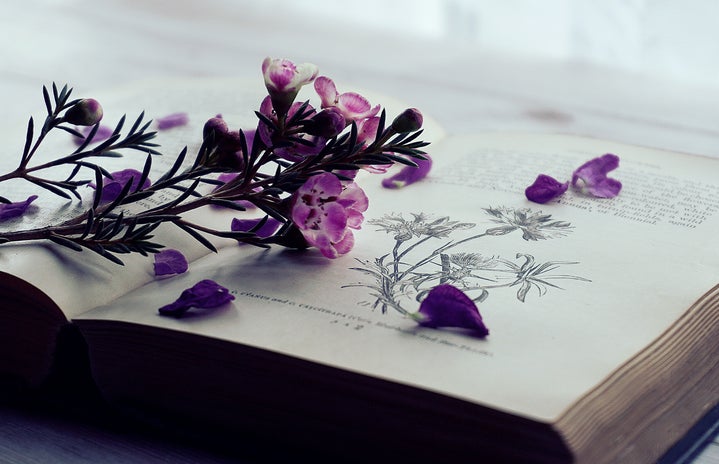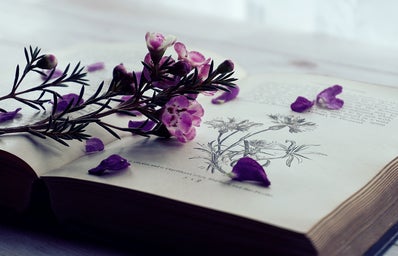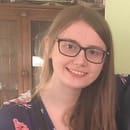As a creative writing student, one of my required classes is a nonfiction workshop. I always hated those assignments in high school where we were forced to write personal stories about ourselves. What was I supposed to write about? I’ve never been on grand adventures, I’ve never left the country (or the Northeast, for that matter), nor have I overcome a great problem and saved the day. I was poised to lose from the start.
Now, if you know me, I am very much a fiction writer: I deal in dragons, magic, and talking birds. That, combined with the fact that most people are intrinsically boring, left me nervous for my first nonfiction course.
Currently, I’m halfway through the class. My bookshelf now includes the essays of Ursula K. LeGuin, Joan Didion, and Paul Lisicky. I absolutely love creative nonfiction and consider myself a memoirist as much I am a fiction writer. So, how did I get here in just a few weeks? And, more importantly:
What is Creative Nonfiction?
Simply put, creative nonfiction is a piece of writing that uses literary techniques to tell true stories. This means dialogue, description, scene and summary, and other literary techniques are all to be found in a work of creative nonfiction.
Three main types of creative nonfiction are the essay, the memoir, and literary journalism. These typically focus on answering questions, portraying the self, and addressing the outside world, respectively, but that’s being generalist; there’s a lot of overlap between the different types of nonfiction. Many nonfiction writers don’t even concern themselves with genre specifics before setting out to write.
Many people are initially turned off from nonfiction for the same reason I was: you hear “essay” and immediately think of five paragraphs and MLA format. But creative nonfiction is so much more than a rigid set of rules and a grade. In fact, nonfiction empowers writers to break many of the formatting and topic rules taught in their English courses. Nonfiction is simply another way of writing. It is a mode of expression, beautiful and underrated.
How Can I Learn to Write Creative Nonfiction?
The same way you’d learn to write fiction, poetry, or any other sort of writing. It takes a whole lot of practice, dedication, reading, and a willingness to get things wrong before they’re right. There’s no right or wrong way to learn, and I in no way want to gatekeep the process. However, this is what I did as I learned.
Similar to what I did with fiction, I read a lot of nonfiction. I read extremely abstract pieces that resembled poetry more than anything, very blunt pieces that were far removed from the fiction techniques I value, and pieces like Consider the Lobster with layers of context and meaning. I eventually found the niche of work I want to replicate: nonfiction that utilizes lots of scene, sensory description, and comparison (Essentially, as fiction as nonfiction can be. Some things never die.). Once I figured out what kinds of nonfiction I liked, I studied those pieces religiously, determining what to use in my own work.
One of the most helpful things I’ve done in learning nonfiction is reading craft essays and keeping a prompt notebook. Craft essays are a bit obvious to experienced writers: these pieces discuss the technical aspects of writing and how to apply them to your own work. Reading books on creative nonfiction have been super helpful; most of them have prompts as well!
I’ve been a very vocal supporter of keeping a writer’s notebook. I began doing the same when I started studying nonfiction, and I’ve only reaped benefits from doing so. I write down memories that can become full fledged essays, potential threads (subjects that are circled back to in a piece), and prompts that seem helpful. If I had to give one piece of advice, it would be to devote one book to the study of nonfiction.
Finally, find a group of people to help workshop and edit your stories. I’m incredibly grateful for my professor, my TA, and all my classmates who help me catch little mistakes and strengthen my work. Don’t be afraid to make mistakes or share your pieces, as both are imperative to building your skills. Give yourself the permission to write “poorly”; “shitty” first drafts are your true ally.
What about COVID Stories?
I wrote this article on March 13, the two-year anniversary of Pennsylvania going on lockdown because of the coronavirus. Since then, I’ve graduated high school with a mask on, been exposed and quarantined, and lost two generations of women to the disease. I have many things to say about the pandemic, as does nearly every single person currently alive. How do we go about telling these stories through creative nonfiction? As I said earlier, I am in no way an expert on this matter, but I do have thoughts on it. As usual, I have no intention to keep them to myself.
Writing about COVID-19 will differ depending on when you write. The story you write today might be laced with hope and a positive look into the future. The story you write years from now might be from a critical lens, analyzing what we could’ve done to prevent all this or vice versa. Time, your outlook, and the events you recall will all impact what you end up writing.
There’s also the matter of audience and what will appeal to your readers. Many people wonder what their relatives will think, whether people will be turned away from pandemic stories, and whether or not their work will be ignored. The important thing is that your story is being told. Part of creative nonfiction is writing the taboo, shining light on topics frequently ignored. I believe COVID-19 will become one of these taboo topics, especially given the way certain people try to live as if the pandemic is over.
Paul Lisicky told me to write letters to people in my life who may be offended or off-put by the things I write. I offer the same advice to you.
Before studying creative nonfiction, I swore to myself that I would never write about the pandemic. I didn’t have the skills to handle it tactfully, nor did I really want to. I wanted to sweep these past going-on-two-years under the rug and pretend it never happened. Today, I want to write a memoir about what happened during the pandemic. I’ve already picked out a title, a form, and a general thread to stick to for the piece. But I know I won’t produce the story I want if I write it now; I must wait it out, until the pandemic’s end, when I’ve been given time to reflect.
Creative nonfiction has empowered me to talk about the unspeakable, to write about the topics I didn’t find comfortable, and to tell the darker stories I have. I offer the same to you, and to anyone who might be struggling under the weight of our times. There is always a brighter future in waiting, and, in the meantime, there’s writing beautiful stories about beautiful misfortunes.


